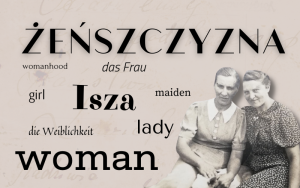Lady, maiden, girl, woman – in one word: żeńszczyzna. Polish “żeńszczyzna”, a rough equivalent to English “femininity”, is one of the earliest terms for women common to all Slavic languages. In Poland, at the turn of the 15th to the 17th century, the term was in use right next to the term man:
- a man (mężczyzna) → mężczyzna or mężczyna – the collectivity of husbands;
- żeńszczyzna or żeńszczyna – the collectivity of wives.

To this day, in most Slavic countries, ‘žena’ denotes both gender – woman – and family function – wife, married but above all ‘one who gives birth’ (the common Proto-Indo-European root *gṷen – ‘to give birth’). Poland is an exception. It is interesting to note that ‘żona’ (a wife), probably the first neutral term for a woman in the Polish language, has been replaced by ‘kobieta’ (a woman), which was originally strongly derogatory and even offensive (e.g. from Old Polish kob – chlew (a pigsty), koro or koba – kobyła (a mare or yaud)). The latter name, i.e. a woman, went from being negative to neutral by the end of the 18th century, and all we have left of the original “żeńszczyna” is the adjective “żeński” (feminine).
The meaning of the word “żeńszczyzna” encompassed a wide range of “female issues”: from gender and female characteristics, to family and social roles, to emotions, values or associations related to the sphere of femininity. Finding the stories hidden in it is like a journey one step at a time: from childhood legends about a great-grandmother, through anecdotes about a distant aunt, to the complete reconstruction of a forgotten story – the HERstory.

